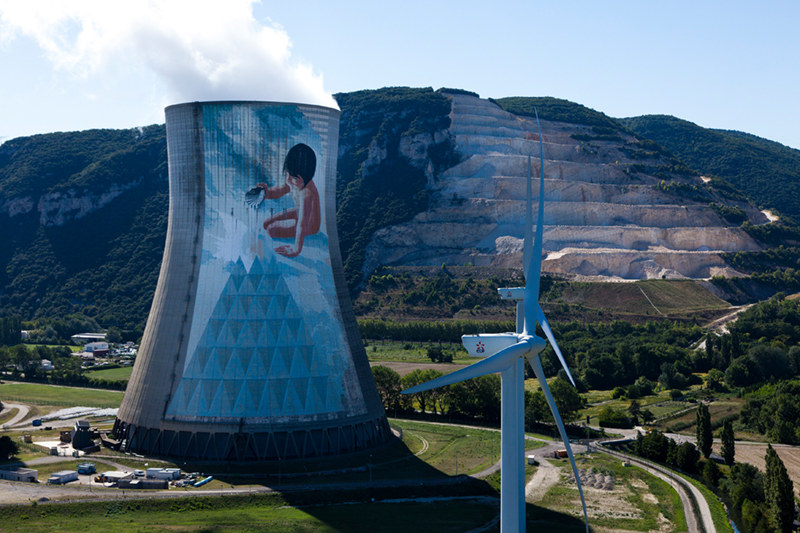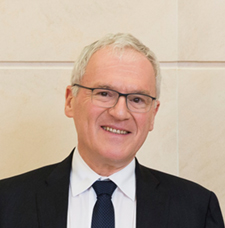
Green Deal: A Low Carbon Utility’s Perspective
Interview with
Mr Lévy, what is your reaction to the Grean Deal Project?
Definitely very positive.
My view is that the fight against climate change has to be the compass of the European Union’s action, especially in the energy sector.
It is my company’s compass as well. This is the time for action. EDF is willing to contribute through concrete solutions.
Our Group has got a 90% decarbonized energy mix. This mix is based on the synergy between renewables and increasingly flexible nuclear energy.
Our strategy for 2030 and beyond encompasses the whole range of the technologies of the energy transition. We have developed long term plans for solar, storage and electric mobility, with ambitious targets: installing 30 GW of solar and 10 GW of new storage capacity by 2035, becoming number one in vehicle charging solutions in our key European markets.
We have launched a new company called Hynamics specialized in producing hydrogen from carbon free electricity and using it in transport and industry. Our R&D invests about half a billion a year in technology and innovation.
In a nutshell we feel very much in line with the Green Deal and are ready to contribute to implementing it, that means to making carbon neutrality a reality.
How do you imagine the path towards this new reality?
Many studies have been made since the Paris Agreement to find out how to reach carbon neutrality so rapidly.
I may surprise you by calling 2050 rapidly but remember that most of the devices we are using in everyday life will have to vanish, since they do emit carbon dioxide. Some of them like cars or boilers have rather long lifecycles, so we must have a sense of urgency and act now to achieve the target by 2050. It is even more true for buildings.
Anyway, the studies made or commissioned by very different organisations like IEA, IPCC or the European Commission share a strong conclusion.
The most cost-effective way of reaching carbon neutrality is to decarbonise electricity and significantly electrify the economy.
Decarbonising electricity at affordable cost is possible with existing technologies. Electrifying the economy multiplies the impact of decarbonising electricity.
Regarding power generation, the fleet of 2050 will be balanced, both centralised and decentralised, both dispatchable and variable. The different technologies complement each other to ensure availability of energy at any time at best cost.
This is the point EDF has already nearly reached in France where our coal-fired generation will be soon closed down and the share of gas-fired generation is extremely limited.
This does not leave much space to the competitors of electricity, does it?
It does. I was saying “significantly electrify” because I do not think electricity should, nor could, be hegemonic as final energy vector. We expect a direct electrification rate somewhere about 50 or 60%, a figure you must compare with current 22%.
This leaves enough space for other vectors, direct use of biomass as a fuel or low carbon gases, basically hydrogen. We expect hydrogen to be the most effective solution in some sectors of the economy, like heavy duty transport or industrial processes.
Of course, Hydrogen must be produced without emitting C02. The most cost effective way to do so is through water electrolysis and my company is active in this field with two entities, McPhy and Hynamics.
Will that be enough to ensure sufficient flexibility?
Regarding flexibility, I believe it will be very electrical. Not only generation but also demand will contribute to the supply-demand balance, thanks to the deployment of smart grids and services that has already begun: you will be more and more able to monitor your demand according to available generation and also to provide flexibility through the battery of your electric car.
By the way EDF Group is one of the pioneers of this sort of service with a new company called Dreev. Artificial Intelligence will also play a great role. We are investing in this also.
This means the customer will be a key player of the optimisation of power systems: one more reason why he has to be at the heart of our strategy!
Do you see the EU Climate Law as a real game changer?
Definitely yes again! The EU Climate Law has both symbolic and real value.
By committing to a long term objective the EU increases the robustness of its climate policies. It paves the way for an efficient transition to a decarbonised economy.
The sooner we act, the more cost-effective the decarbonisation. And also the more limited the damages to the planet.
From our perspective as investors, the Climate Law creates predictability. And to us predictability means timely investment in innovation, clear industrial strategies and robust business plans.
Which ultimately translates into affordable energy for our customers, since our efforts are focused on clear strategies, and with more certainty our cost of capital is lower.
This predictability well be even more effective if a milestone is set for 2030, with more ambition than the current one. We support an increase of the 2030 target up to 55%.
And what should be changed in the existing framework for this purpose?
Listen, in a sense it is very simple. Cost-effectiveness is the main issue.
I see decarbonisation as an investment. Not only do we do it because we care about the planet even though this is of utmost importance but also we want to be competitive against the rest of the world even though in Europe we have not got the same amount of natural resources as other countries.
And we want to be the leaders in new industrial sectors. As with any investment you have to spend some money upfront. The less you spend initially, the higher the benefits when your goal is achieved.
You may discuss the technicalities, but nothing more efficient than a price signal has been invented to meet objectives at best cost. This is why I believe enhancing the ETS is key to the success of the European energy and climate policy.

And how would you do that?
What investors need is a meaningful and predictable carbon price.
Firstly, meaningful. You have to be consistent. If you increase the 2030 ambition economy-wide, you must draw conclusions regarding the ETS sectors. The pace of their emissions reductions will have to be more rapid.
This is the main point. And of course we will have to adapt the system to this acceleration but again I am confident, even though this is more technical: we have a window of opportunity for some changes in the stability reserve of the ETS and possibly some more adaptations, to national policies of phasing out coal for instance.
Secondly, predictable. It has been clear to me for some time that a carbon-price floor is the best tool for that purpose. The topic is on the table again and I am convinced the EU can help investors to overcome the barriers to investment by implementing such a floor.
Regarding sectors currently outside of the ETS, I believe we have to study their peculiarities and find the most efficient solution for each of them: include them or implement another cost-effective tool if more appropriate.
Anything else you expect from the Green Deal?
Yes. We are very happy to see that the European Union is going to support the technologies and to launch an industrial strategy with fresh money in order to accelerate the transition and create a European leadership.
We are available to engage into partnerships and contribute to innovation in our sector with our powerful R&D, more than 2000 people, in house. We would like to see a strong European industrial policy that helps avoid repetition of the failure of the solar panel industry.
Regarding batteries, hydrogen, vehicle-to-grid, I am convinced the EU is able in future to be at the forefront.
What we ultimately expect from the EU is that the new policy sets up a framework conducive to innovation and investment, which will ensure both brainpower and productive jobs located on the European territory.




